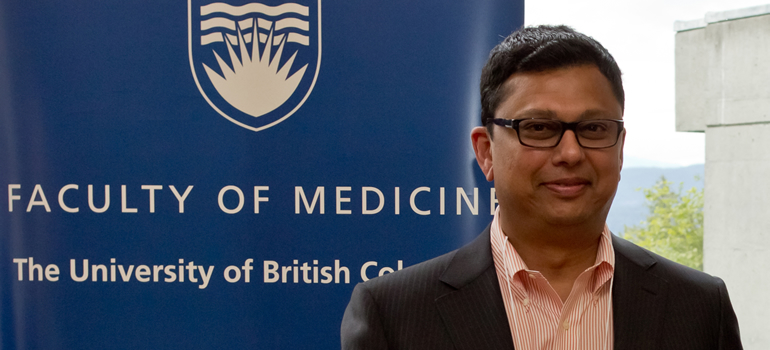Health economist Aslam Anis on the value of expensive new class of medicines
In the last ten years, a new class of rheumatoid arthritis drugs, called biologics, have muscled their way into the prescription pads of doctors and the medicine cabinets of their patients. But are they better than cheaper, existing drugs?
UBC health economist Aslam Anis was part of U.S.-Canadian team that has spent the past few years answering that question, and published their findings today in the New England Journal of Medicine
Why did you and your collaborators to take this on?
Biologics have been touted as the latest and greatest treatment for rheumatoid arthritis because they are based on human DNA. Many doctors have started prescribing them if the first-line drug, methotrexate, known as a Disease Modifying Anti-rheumatic Drug (DMARD), doesn’t work. To control costs, many jurisdictions, including B.C., recommend that physicians try methotrexate and at least one other DMARD before they start prescribing biologics.
Nonetheless, doctors want to start using biologics sooner rather than later. The problem is, biologics are very expensive – more than $20,000 a year for a single patient, compared to a few hundred dollars a year for the older DMARDS. And given the large number of people with rheumatoid arthritis, biologics have quickly become one of the costliest drugs for the health systems in British Columbia and Canada. We wanted to know if the extra expense is warranted for patients who don’t respond to methotrexate.
How did you answer that question?
Our team of U.S. and Canadian researchers conducted a large clinical trial, with 353 patients over three years. One group received one of the biologics, known by its commercial name, Enbrel, along with methotrexate. The other group received a less expensive triple therapy – two other DMARDs plus methotrexate.
What did you find?
There was no significant difference in the outcomes for both groups. An equal share of patients in both groups, 73 per cent, regained mobility and experienced less pain and stiffness after six months. Those who didn’t improve switched therapies, and they both improved, too, at equal rates.
So there is no reason to use these expensive biologics right away if methotrexate doesn’t work. The older drugs are just as effective, for a fraction of the cost. The savings might be used to expand biologics to even more patients – but only to those who would truly benefit – without breaking the bank.
How much money could be saved if these findings are followed?
We’re working on the answer to that question right now. We believe that once we lay out the numbers, it will be a no-brainer.

